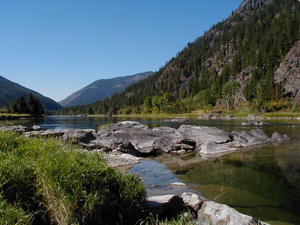| The
Kootenai River has its origins in British Columbia's Kootenay National
Park in Canada. From there it flows 485 miles into northwest Montana and
through the towns of Libby and Troy. From there it flows into northern
Idaho, then back into Canada and Kootenay Lake. Ultimately it joins with
the Columbia River. Sixteen miles north of Libby, the river is held back
by Libby Dam, creating a 90-mile long reservoir called Lake Koocanusa
which reaches into Canada.
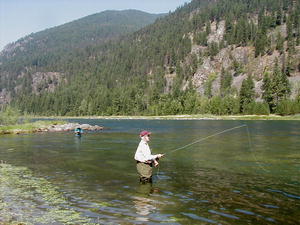 The
Kootenai River is the second largest tributary to the Columbia River
in terms of runoff volume, third in terms of drainage area. The major
tributaries of the Kootenai River are the St. Mary, Bull Elk, Fisher,
Yaak, Moyie, and Slocan Rivers. The Kootenai Basin is largely mountainous
and dominated by three major ranges. The Rocky Mountain Range and its
offshoot, the Flathead Range, constitute the eastern boundary; the Purcell
Range roughly bisects it from north to south. The Selkirk and Cabinet
ranges mark the western boundary. Elevations reach a maximum of about
12,000 feet with most summit elevations between 6,000 and 7,500 feet.
Except for a few areas, the entire watershed is heavily forested. The
Kootenai River is the second largest tributary to the Columbia River
in terms of runoff volume, third in terms of drainage area. The major
tributaries of the Kootenai River are the St. Mary, Bull Elk, Fisher,
Yaak, Moyie, and Slocan Rivers. The Kootenai Basin is largely mountainous
and dominated by three major ranges. The Rocky Mountain Range and its
offshoot, the Flathead Range, constitute the eastern boundary; the Purcell
Range roughly bisects it from north to south. The Selkirk and Cabinet
ranges mark the western boundary. Elevations reach a maximum of about
12,000 feet with most summit elevations between 6,000 and 7,500 feet.
Except for a few areas, the entire watershed is heavily forested.
The Kootenai River supports
populations of westslope cutthroat trout, bull trout, Kokanee salmon,
and rainbow trout, among other species. White sturgeon also inhabit
the river below Kootenai Falls. Libby Dam, completed in 1972, altered
the river by controlling both the timing and volume of flow, as well
as nutrient and sediment loading, affecting the
aquatic ecosystem above and below the dam. Some species have thrived
under these conditions, while others have suffered. Water quality within
the Kootenai River basin is generally considered high and the river
is considered to be a blue ribbon trout-fishing river, providing exciting
 sport
fishing action. The drainage contains a wide variety of insect
life, resulting in prolific hatches throughout the season. The Kootenai
and some of its tributaries are the only waters in Montana where a native
strain of rainbow trout, called Columbia River Redbands are indigenous.
This species is indigenous only to the head-waters of the Columbia River,
including the Kootenai, and is known for its excellent fighting ability. sport
fishing action. The drainage contains a wide variety of insect
life, resulting in prolific hatches throughout the season. The Kootenai
and some of its tributaries are the only waters in Montana where a native
strain of rainbow trout, called Columbia River Redbands are indigenous.
This species is indigenous only to the head-waters of the Columbia River,
including the Kootenai, and is known for its excellent fighting ability.
The river varies from big and
broad to the rushing waters in the China Rapids Canyon and over Kootenai
Falls. The waters between the falls and Libby Dam offer a variety of
deep water, shallow rapids and mid-stream islands for fishing access.
Many people fish from the banks and islands or use drift boats and float
tubes. Consistent angling usually starts around the middle of June and
lasts well into November.
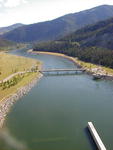
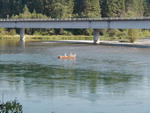 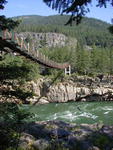
For
further information contact:
Kootenai
National Forest
506
US Highway 2 West
Libby,
MT 59923
(406)
293-6211 |
